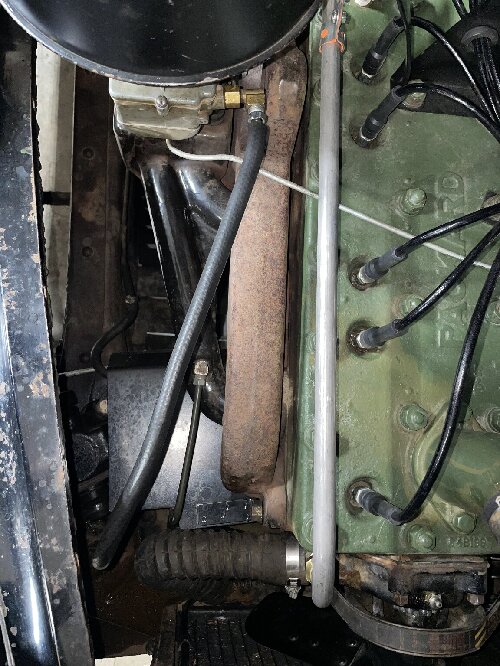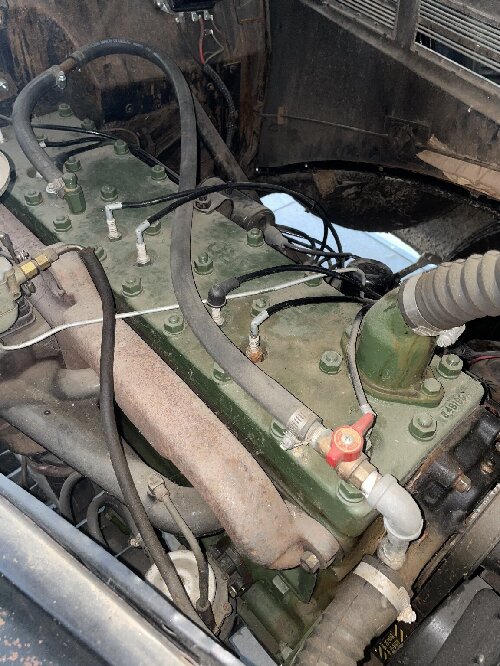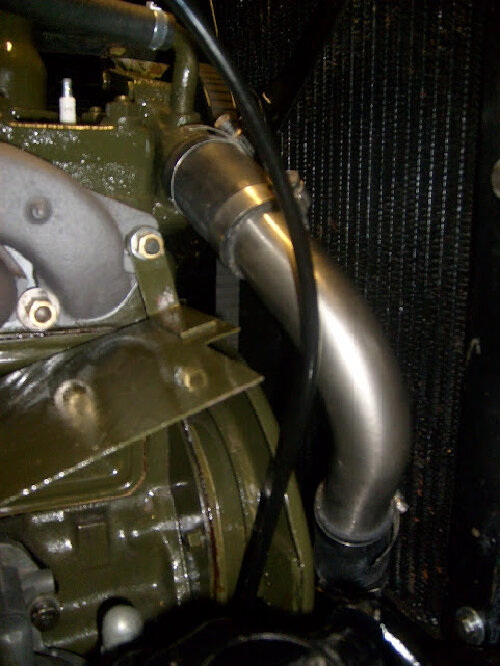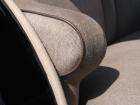|
Re: Don’s 1937 (120) 138CD Deluxe Touring Limo
|
||||
|---|---|---|---|---|
|
Webmaster
|
Have you checked to make sure the fuel line routing isn't too close to the manifold? If it was replaced in the past, it may have been routed in a tighter path than original that brought it closer to the manifold. Once the engine is off, your not getting the airflow on the line and manifold and the heatsoak begins.
As an experiment, you could always temporarly wrap the line in some scrap insulation and see if it helps. If so, you need know the line is getting too much heatsoak after the engine is shutdown.
Posted on: 2024/4/23 20:33
|
|||
|
-BigKev
1954 Packard Clipper Deluxe Touring Sedan -> Registry | Project Blog 1937 Packard 115-C Convertible Coupe -> Registry | Project Blog |
||||
|
||||
|
Re: Don’s 1937 (120) 138CD Deluxe Touring Limo
|
||||
|---|---|---|---|---|
|
Home away from home
|
When the pump was just re-built and re-installed, a heat shield was installed that was previously not there. Also, the line was routed much better to be significantly farther away from the exhaust manifold. And, we split a rubber hose and put it over the line as additional insulation. That’s all part of what is so puzzling.
 This is how it was previously. 
Posted on: 2024/4/23 21:01
|
|||
|
||||
|
Re: Don’s 1937 (120) 138CD Deluxe Touring Limo
|
||||
|---|---|---|---|---|
|
Webmaster
|
Maybe as a test, loosely crumple a ball of tin foil over the exposed metal portion of the fuel line and fitting at the carb.
Also, if you happen to have one of those laser thermometer doo-dads, keep checking the temp of thar area after you shut down the motor up to the point it starts to overflow. There were some later carbs that had an auxiliary metal heatshield between the carb and the exposed manifold. Also later carbs had the fuel line come out the front of the carb and I to the glass bowl filter which usually always had a little air bubble in it. So that would have acted as buffer against pressure built up in the line. The fact pressure is building up that is exceeding the fuel pump pressure and overcoming the float needle sure sounds like fuel is boiling in that line.
Posted on: 2024/4/23 22:05
|
|||
|
-BigKev
1954 Packard Clipper Deluxe Touring Sedan -> Registry | Project Blog 1937 Packard 115-C Convertible Coupe -> Registry | Project Blog |
||||
|
||||
|
Re: Don’s 1937 (120) 138CD Deluxe Touring Limo
|
||||
|---|---|---|---|---|
|
Forum Ambassador
|
Fuel line on my long gone '41 120 proscribed a big arc from the fuel pump to the carb, keeping it well away from the exhaust manifold. In addition, the fuel pump had a heat shield protecting it. This photo illustrates both.

Posted on: 2024/4/23 22:09
|
|||
|
Mal
/o[]o\ ====  Bowral, Southern Highlands of NSW, Australia "Out of chaos comes order" - Nietzsche. 1938 Eight Touring Sedan - SOLD 1941 One-Twenty Club Coupe - SOLD 1948 Super Eight Limo, chassis RHD - SOLD 1950 Eight Touring Sedan - SOLD What's this?  Put your Packard in the Packard Vehicle Registry! Here's how! Any questions - PM or email me at ozstatman@gmail.com |
||||
|
||||
|
Re: Don’s 1937 (120) 138CD Deluxe Touring Limo
|
||||
|---|---|---|---|---|
|
Webmaster
|
Mal, that's also how the line on my 54 is routed as well. Also that glass filter right off the carb.
Posted on: 2024/4/23 22:11
|
|||
|
-BigKev
1954 Packard Clipper Deluxe Touring Sedan -> Registry | Project Blog 1937 Packard 115-C Convertible Coupe -> Registry | Project Blog |
||||
|
||||
|
Re: Don’s 1937 (120) 138CD Deluxe Touring Limo
|
||||
|---|---|---|---|---|
|
Home away from home
|
Thanks, Mal and Kev.
Mal - I do have the heat shield, but perhaps not enough of an arc of the fuel line routing. I’m interested in the fuel filter as I can see how that could help this situation. Can you provide some details? Like this? https://www.speedwaymotors.com/Glass-Bowl-Fuel-Filter,273099.html
Posted on: 2024/4/23 22:53
|
|||
|
||||
|
Re: Don’s 1937 (120) 138CD Deluxe Touring Limo
|
||||
|---|---|---|---|---|
|
Home away from home
|
I’m not sure how your year of car was originally but it seems an odd place for the inlet. Is it the correct carburetor? If it is, maybe consider a right angle fitting right at the carburetor to minimize the section that is currently over the manifold. Also, my 1939 had a heat shield on the carburetor itself.
Posted on: 2024/4/24 2:15
|
|||
|
All generalities are false.
Once I thought I was wrong but I was mistaken. Don Pierson Packard / IMPERIAL page CA DMV Licensed Vehicle VIN Verification 1951 Henney-Packard 3-Door Long Wheelbase Air Force Ambulance The 1951 Henney-Packard is For Sale! 1954 Packard Patrician 1954 Packard Patrician Parts Car 1956 Clipper Custom Sedan |
||||
|
||||
|
Re: Don’s 1937 (120) 138CD Deluxe Touring Limo
|
||||
|---|---|---|---|---|
|
Home away from home
|
Looks like the wrong carburetor to me. I believe the fuel inlet should point forward from the upper center of the bowl. That gets the fuel line and filter bowl, if present, farther away from the manifold.
(They're still too close, in my opinion) Also, the often missing fuel pump heat shield can help reduce hot fuel issues. Late initial timing or malfunctioning spark advance will cause the exhaust manifold to run hotter, which can contribute to hot fuel issues like vapor lock and flooding. Modern fuel blends are not well-suited to carbureted engines. The modern, EPA-approved gasoline blends are designed to be held under pressure, which prevents boiling of the fuel in the hot underhood environment. The more volatile properties of EPA gasoline aggravate flooding and vapor look issues with older cars that have atmospheric fuel systems.
Posted on: 2024/4/24 9:09
|
|||
|
||||
|
Re: Don’s 1937 (120) 138CD Deluxe Touring Limo
|
||||
|---|---|---|---|---|
|
Home away from home
|
When the engine is stopped, heat builds up rapidly under the hood,and engine temperature will usually rise for a few minutes as high heat from the exhaust manifold "soaks" back into the block and into the intake manifold. Parts like the carburetor and fuel pump will get much hotter than they normally are when the engine is running. Gasoline that is in the line and filter bowl between the fuel pump and carburetor is trapped, and as heat builds, pressure builds, which can force open the float valve in the carburetor. At the same time, the gasoline in the carburetor bowl can come to a boil, causing it to overflow into the intake. Either or both of these conditions will lead to flooding, followed by hard starting due to an empty carburetor bowl when the car is re-started after sitting a while.
Posted on: 2024/4/24 9:17
|
|||
|
||||








